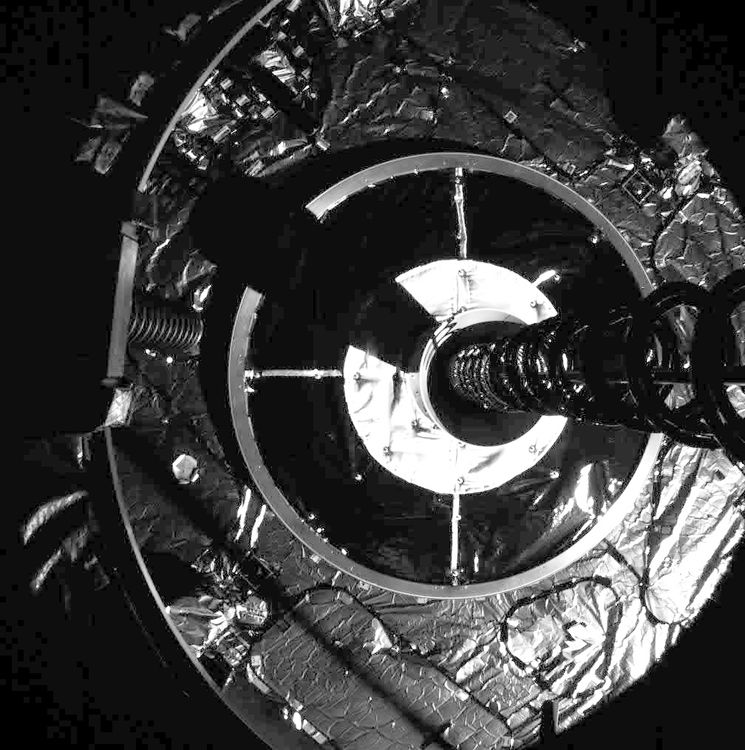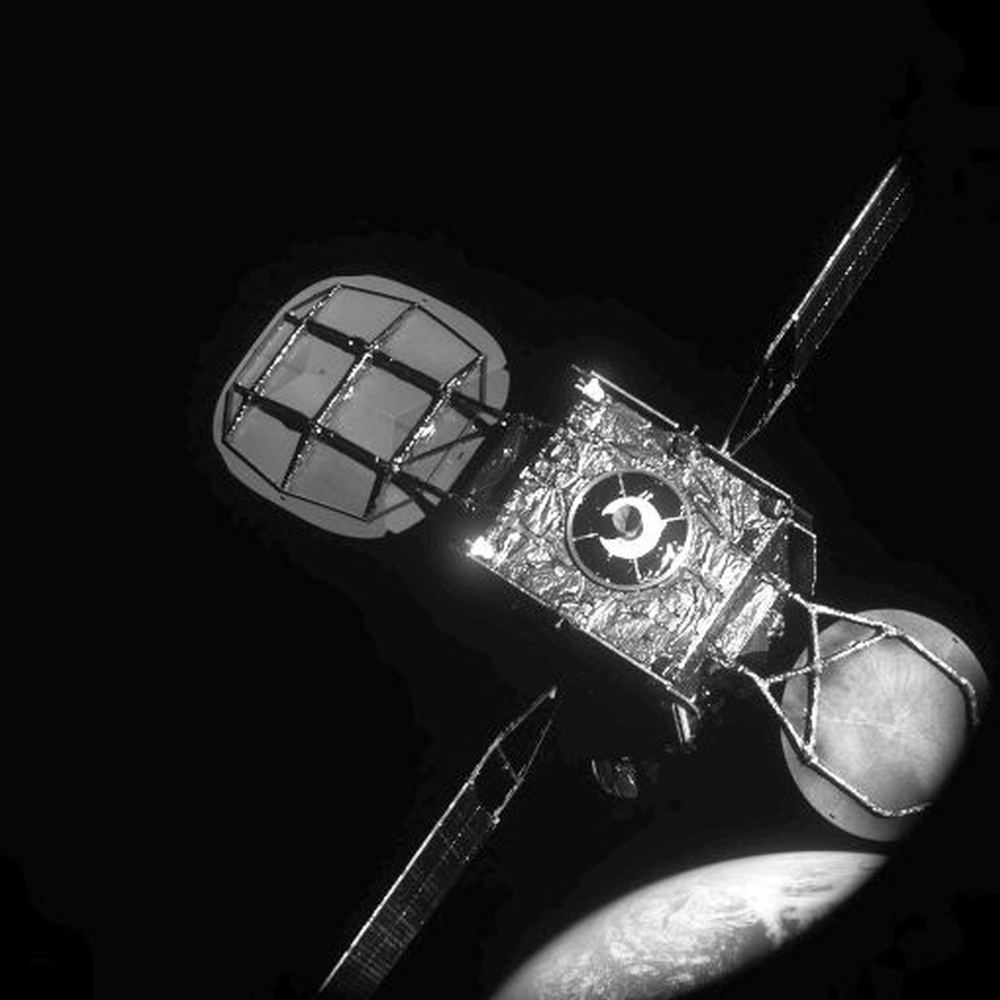SpaceLogistics LLC has achieved a first: it’s docked it’s maintenance satellite, called MEV-1, with another satellite in order to extend the life of the satellite. The docked pair will perform some check-ups, and if all goes well, MEV-1 will boost the client satellite to a higher orbit, extending its operational life-span by about five years.
MEV-1 stands for Mission Extension Vehicle-1, and it launched back in October 2019 from the Baikonur Cosmodrome in Kazakhstan, on a Russian Proton rocket. It docked with Intelsat-901, a communications satellite. In preparation for the docking, Intelsat-901 went out of service, and temporarily transferred its duties to another satellite.
“Our Mission Extension Vehicle provides an innovative, satellite life extension service,” said Tom Wilson, president, SpaceLogistics LLC. “Together, Northrop Grumman, SpaceLogistics LLC and Intelsat have taken the first step in pioneering in-space logistics services for both commercial and government customers.”
After keeping Intelsat-901 going for an extra five years, MEV-1 will place it in a final decommissioning orbit, called the GEO graveyard. Then MEV-1 will have another ten years of life left to “donate” to other client satellites.
Intelsat says they’re pleased to be the first MEV-1 client, and that they’re proud to be part of history.
“Intelsat has been at the forefront of innovation and game-changing space technology for decades. Pushing the boundaries of what’s possible is in our DNA here – that’s why we didn’t hesitate to sign up to be MEV-1’s first customer,” said Mike DeMarco, executive vice president and chief services officer at Intelsat. “We’re proud to make history with SpaceLogistics LLC and Northrop Grumman on this groundbreaking space milestone.”
MEV-1 has a low-risk method of docking with client satellites, using a satellite’s physical features. Prior to docking, it orbits the client satellite and inspects it, before positioning itself for final approach. After docking, MEV-1 takes control over both satellites. It can dock with multiple satellites during its 15 year mission. It can only service geostationary satellites.

Space Logistics will launch a second satellite, MEV-2, sometime later this year. Its first client will be another Intelsat satellite.
Space Logistics sees this as just the beginning. They envision a fleet of maintenance satellites that not only extend the life of client satellites, but also other tasks. They say their satellites will be able to inspect other satellites, and eventually even perform robotic repairs. They’re also developing small MEPs, Mission Extension Pods, which are smaller and cheaper than MEVs and only perform orbit control.
With increasing commercial space activities in Earth orbit, Space Logistics won’t have this market space to themselves for long. A company called Orbit Fab is developing a servicing satellite that can refuel client satellites. Another company, called Made in Space, is developing the Archinaut.
According to Made in Space, Archinaut will allow “remote, in-space construction of communications antennae, large-scale space telescopes and other complex structures.” In July 2019, Made in Space was given a NASA contract for a Robotic Manufacturing And Assembly Flight Demo Mission.
MEV-1 and satellites like it will not only extend the life of satellites, they could help with the growing space junk problem. By placing spent client satellites in the GEO graveyard orbit, it will move them out of common operational orbits, and reduce the chance of impacts. That will also reduce the amount of space junk generated by collisions.
More:
- Press Release: Northrop Grumman Successfully Completes Historic First Docking of Mission Extension Vehicle with Intelsat 901 Satellite
- Space Logistics LLC
- Youtube video: Archinaut One to Manufacture and Assemble Spacecraft Parts While Orbiting Earth

